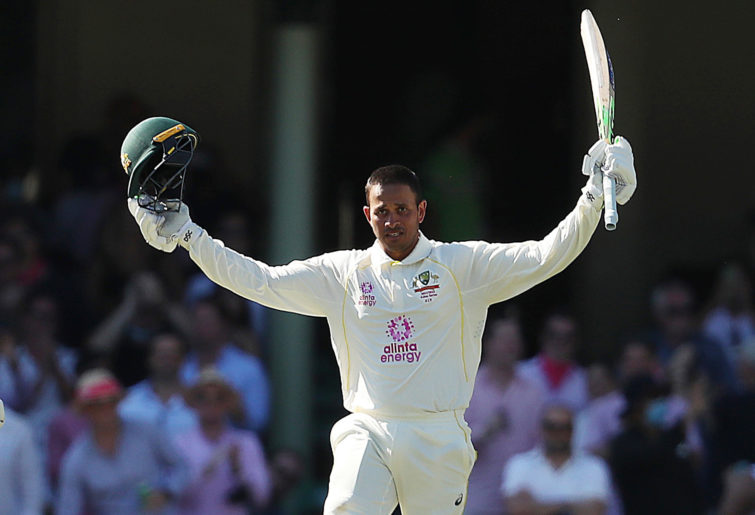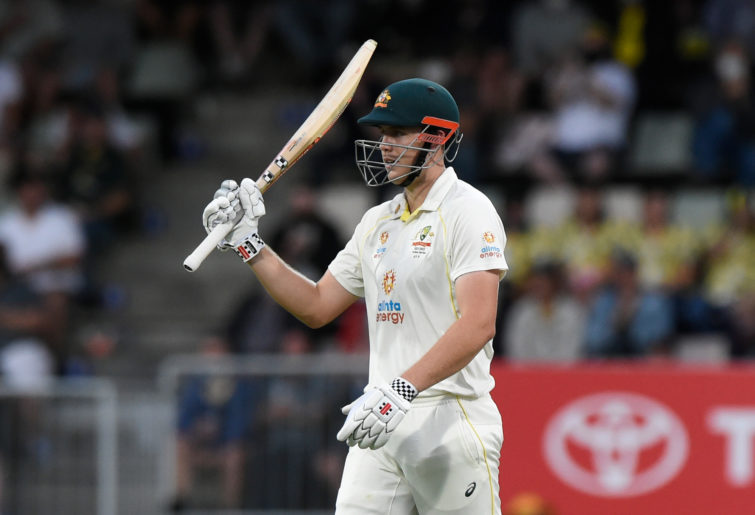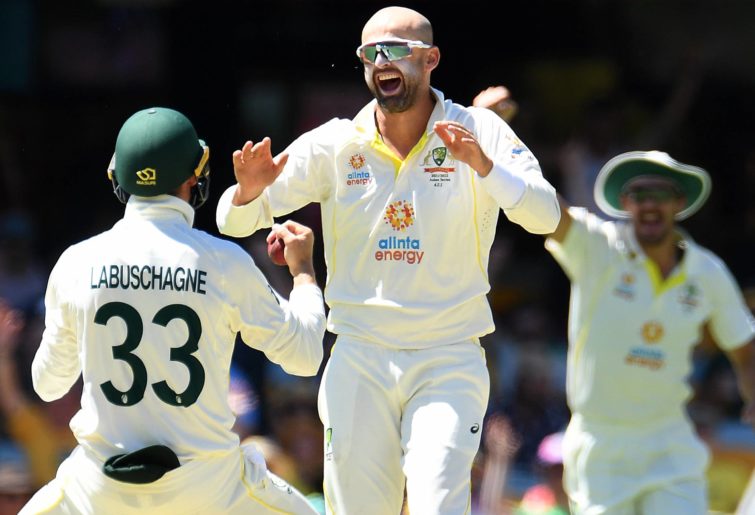
The dust has finally settled on 15 attritional days of Test cricket. It was not until day 15 that one team blinked, allowing Pat Cummins and his side to crash through and snatch the series.
The significance of this victory should not be understated. Australia had not won a series in Pakistan since 1998, when baby-faced team member Cameron Green was still 18 months from being born.
To win in 1998, Australia assembled a squad that had already taken the mantle of No.1 from the previously invincible West Indies and included such names as Michael Slater, Mark Taylor, Justin Langer, Mark and Steve Waugh, Ian Healy, Glenn McGrath and Stuart MacGill.
Even so, the end scoreline was the same, just 1-0, and it wasn’t safe until a series-winning second innings batting performance in the final Test led by a Mark Waugh masterclass.
So, this achievement by Pat Cummins and his team is certainly one to celebrate. Here are my ratings for each team member.
Usman Khawaja: 9.99 (496 runs at 165.3)
It doesn’t get better than this. Khawaja’s second coming as a Test player – actually it’s probably around his seventh coming – could not have been more spectacular. After twin centuries on his Ashes recall, Khawaja secured an opener position despite not playing there regularly for many years.
Previously Khawaja had had his struggles away from home, which was probably the main reason for being in and out of the side. At 35, could the old dog learn new tricks?

(Photo by Mark Metcalfe – CA/Cricket Australia via Getty Images)
My word he could! Khawaja produced the greatest performance in Asia by an Australian batsman since Matthew Hayden in India more than 20 years ago: 97, 160, 44 not out, 91 and 104 not out. Unbelievable.
The key was calmness and an unrivalled ability to change gears. Khawaja started each innings positively against the new ball, the easiest time for scoring. After scoring his first 30 or so quite quickly, he reverted to accumulation mode as scoring became more challenging without ever getting frustrated. The Pakistan bowlers must be having nightmares.
Khawaja loses 0.01 for shelling a relatively simple chance off Mitchell Swepson as the second Test was coming down to the wire. After being at the crease for a whopping 874 minutes (14.5 hours!) by that stage it’s a wonder he could bend down at all.
Just for good measure he added another 597 minutes in the third Test for a total of over 24.5 hours logged for the series. That’s right, Khawaja literally batted for an entire day. What a series.
David Warner: 5 (169 runs at 33.8)
David Warner continued his slow decline. Normally a pair of half-centuries and an average in the mid 30s for an opener would be a six or even seven – if this series was being played in Australia, South Africa or England, where the hardest time to bat is against the new ball. It was the exact opposite here.
Warner enjoyed the best of the conditions, and while he failed only once – his dismissal in junk time in the second Test doesn’t count – he never adjusted to get through the more difficult periods in the way his opening partner did.
An overall strike rate of just below 60 compared to Khawaja’s more measured 50 shows that Warner is one-paced these days. But he failed to build an opening partnership only once, so job done – just.
Who would have thought a year ago, when we were worrying about finding a new batting partner for our veteran opener, that we would have been talking about Khawaja?
Marnus Labuschagne: 5 (170 runs at 34, one wicket at 123)
Someone recently describe Marnus as a Labrador. That seems about right.
Labuschagne gets a slightly less deserving five than Warner solely due to his 90 in the first Test, helping Khawaja set the tone for solid batting for the series. In the second Test he ran himself out for a duck on an absolute road, whacked 44 when setting up a declaration. The third Test followed the same pattern – no first innings contribution, then some cheap runs.
His one wicket was Azhar Ali on a featherbed, but he was rarely used after Swepson was brought in for the last two Tests. Labuschagne’s bowling at the moment seems to be better in its absence than reality, with many saying he would have been a better option than Swepson, despite not looking likely across 31 overs and offering little control at 4 per over.
Steven Smith – 7 (226 runs at 56.5)
Steve Smith was not quite the Sledghammer of Justice that he has previously been, but he was still pretty damn good. He started with a really important 78 in the first Test. Smith came in at 2 for 203 and left at 6 for 422, fashioning a hundred-run partnership with Labuschagne and another 80 with Cameron Green. Given the top three were all out with 311 on the board, Smith’s guidance through to a defining score was more crucial than he was given credit for.
Smith followed this with an excruciatingly slow 70 on a featherbead in the second Test, bringing into sharp focus a trend over Smith’s last 18 months – teams have found a way to stop him scoring freely. His lack of recent centuries is not because he is getting out more often, far from it. It’s because he is not scoring while he is in. Smith’s strike rate of just 37 for the series was well below any other player in the side.
A third consecutive slow half-century helped set up the final Test, and this time it was justified after coming in at 2 down for just 8. It could be argued that Khawaja and Smith saved the series right there with their crucial 138-run partnership, allowing others to win it on the fifth day.
Of course this score needs to consider Smith’s unprecedented run of missed chances at slip throughout the series, although arguably he took the one that counted, a very difficult chance from Babar off Lyon on day 5. I was amazed when I saw this, but Smith somehow took six catches for the series, which was not bettered by another other player, including the two keepers.
Travis Head – 3 (68 runs at 22.7)
After a stellar Ashes performance, Travis Head came back to earth with a thud. Denied the types of pitches suited to his square of the wicket frenetic scoring methods, Head struggled to get into the contest, never passing 26 and only once facing 50 balls.
Cameron Green – 8 (155 runs at 55.7 and 3 wickets at 57)
This was a critically important outing for Green and he passed with flying colours. Asked to take a higher bowling workload in the final two Tests to accommodate the second spinner, Green provided the team with a level of flexibility that they have not enjoyed for a long time.

With the bat Green was very solid and grew in confidence on his first overseas tour. Critically, Green fashioned an 80-run partnership with Smith in the first Test to help Australia put a result out of reach for the hosts. A middling score in the second Test was followed by possibly the most important knock in his short Test career so far – his 79 in partnership with Alex Carey, shepherding Australia from a precarious 5 for 206 to over 350, giving his bowlers a target to bowl to.
With the ball Green played a holding role, never once bowling more than 15 overs in an innings or taking more than one wicket. However for those that watched him extract life from the dreary surfaces, and noted his economy rate of just over 2.5, Green showed himself to be a more than adequate third seamer.
Each of his three wickets was a top 7 bat and he made the initial breakthrough on day 15, having the previously immovable Abdullah Shafique caught behind to get the ball rolling.
Alex Carey – 9 (179 runs at 59.7, 5 catches)
There were real question marks over Alex Carey heading into this series, with the gloves and bat, and he answered those questions emphatically.
Firstly, Carey’s keeping was very tidy, his energy levels good and he was ready for the few chances that came his way. As he gains confidence, maybe Carey can be the one to sort out the spacing of his slips.
With the bat Carey was called upon three times, for two half-centuries. The second of these, in a century partnership with Cameron Green, arguably set up the third Test. The key measure for Carey was his busy strike rate of over 58. With the other major contributors, Khawaja, Smith and Green all striking well under 50, Carey was able to find a way to push the game along.
All in all this was a performance to be proud of.
Mitchell Starc – 7 (8 wickets at 34.1. 54 runs at 18)
Well Mitchell Starc did what Mitchell Starc does. Lengthy period of not a heck of a lot and then, wham!
The best part about this series for Starc was that he did not drop away as the series went on, like he can be prone to do. He started with zero wickets in the first test but survived the chop when the selectors opted to sacrifice Josh Hazlewood for the extra spinner.
The selectors’ faith was rewarded when Starc took two top order wickets in consecutive deliveries to break open the second Test. He failed to capitalise in a wicketless performance in the second innings and the knives were out once again.
But there he was in the final Test, ripping the heart out of the Pakistan middle order in the first innings before coasting to the win.
A very Mitchell Starc-like series from the left arm speedster.
Pat Cummins 9.5 – (12 wickets at 22.5. 53 runs at 53)
What can you say? Really, what more can be said? How about this: in his 41-Test career Cummins has now performed the final act to finish a Test on nine occasions. Whether the final wicket, cartwheeling the off and middle stumps, the winning runs (on debut as a teenager no less), a catch in the field, a catch from his own bowling or a direct hit run out, Cummins has literally done it all. He is the ultimate finisher.
But apart from providing the sweet, sweet final movement, Cummins did pretty much everything he could to take this series. He took the equal most wickets in the series, with Nathan Lyon, but at half the average and half the strike rate.
An average of 22 on those wickets? Magical. An underrated extra is that he was the most economical bowler from either side, never letting the game get away. So the opposition batters couldn’t score and were under constant pressure from the great bowler.
In the final Test, Cummins cracked the game open with five first innings wickets and then his three in the second helped ensure the victory. He could have done no more.
And there was his captaincy. Cummins’ major attribute here is belief. His tired side, slogging it out on benign pitches, believed right up until the final session, on the back of a captain that they knew would charge in and fight to the very end. He brought himself back to bowl at all the crucial moments to lead.
The only knock was his conservative declaration in the second Test, but then that draw gave Australia the rare opportunity for a winner-takes-all knockout blow in the final Test, and those are the moments that Cummins relishes.
Nathan Lyon – 9 (12 wickets at 44.9. 45 runs at 15)
Earlier I described Mtichell Starc’s series as very Starc-like. This was almnost a very Nathan Lyon-like performance, that ended in a very un-Lyon like manner.
Two and a half tests, five innings, seven wickets and an opposition batting out the fifth day to survive. This seems like a very familiar tune in the career of Nathan Lyon.

(Photo by Albert Perez – CA/Cricket Australia via Getty Images
While the first Test was very forgettable for the veteran off-spinner, with a total of one wicket for 236 runs, Lyon’s second Test was actually pretty good, with four second innings wickets out of the seven to fall, plus an enjoyable 38 as a night watchman. Lyon again failed to finish off an opposition’s fourth innings, but he was the least culpable as Starc and Swepson contributed no wickets for 200 runs between them and chances were repeatedly squandered.
Throughout all this Lyon continued to toil away, bowling long spells with a very low economy rate. And finally on day 15 he struck, taking three of the big four top-order wickets and five in total for the innings. Man of the Match in the defining Test, spinning Australia to victory in Asia for the first time since 2011.
How very un-Lyon like.
Mitchell Swepson – 2 (2 wickets at 133. 24 runs at 24)
This was a tough first series for the Queensland leggie. Many chances and half-chances were squandered, making his figures look worse than he actually bowled. An economy rate below 3 as a leg spinner tells the tale of a mostly controlled performance. But only ten overs in the defining fourth innings of the series tells the tale of limited threat to the batsmen. He will undoubtedly learn from this experience.
Josh Hazlewood – no rating
Hazlewood scored no runs and took no wickets in his one Test on a surface designed to neuter the Australian pace attack. As usual, he was stiflingly accurate, conceding less than two runs per over.